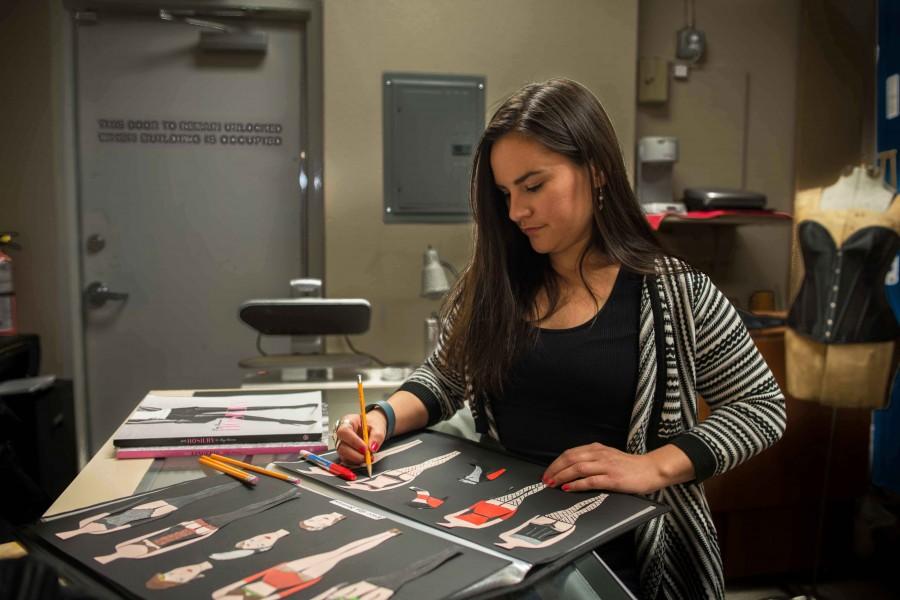Waist trainers have become the latest beauty trend among women trying to possess the quintessential curvy shape, which involves wearing a waist-cinching corset for hours at a time.
Women must wear a tight corset-like garment around the mid-waist to mold the hourglass figure by gradually compressing the core over time to reduce the circumference of the waist and make it appear smaller.
Jessica Morales, junior social work and microbioligy major, said purchasing a waist trainer might be worth the expense as long as you wear it accordingly.
“I do think it works, but I believe it does have its consequences if people don’t use it the way they are supposed to,” Morales said. “Some people can take it to an extreme.”
The prices for a waist trainer range from $50 to $150, depending on the customization. Celebrities such as Kim Kardashian, Jessica Alba and Brooke Burke have openly admitted to using waist trainers as a way to modify and slim the waist in a non-invasive way.
Jessica Reza, manager of House of Dame Intimates, said there are different methods of waist training and different corset types that are best accommodated to each individual.
“It is important to be knowledgeable on the safe and proper methods of using a waist trainer before deciding to jump into the process,” Reza said.
The best kind of shapewear is made with steel bone, while others are made out of more flexible breathable materials that are best used to work out in.
Many wearers keep waist trainers on 24 hours per day, seven days a week, even while sleeping. The claim is that the practice of waist training enhances weight loss by suppressing wearers’ appetites and encouraging perspiration.
Like most weight loss regimes, there isn’t a clear bottom line on whether waist training is safe, and if it could cause more harm than good for some women.
“Waist training has been given a bad stigma because some people over do it,” Reza said.
Reza said it is not recommended to sleep with it on, but the benefits involve strengthening your core, all while improving posture and spine alignment in some cases.
Numerous reports claim that it can bruise internal organs or cause breathing problems, but despite the critics, it appears waist trianing popularity has only increased.
According to Women’s Health Magazine, experts agree that there’s no way it can really work, and it might do real bodily harm. Colorful fabrics, designs and celebrity endorsements may have contributed to its popularity.
Reina Treviño, senior mechanical engineering major, said she has heard waist training does work, but despite the health risks she is willing to give it a try.
“It looks like it really works, but I’ve heard that it causes internal damage,” Treviño said. “I’ve never used one before, but I’m open to experiencing the process myself.”
Gloria Reza, owner of House of Dame Intimates, received corsetry education while studying fashion and marketing design in London. She said waist training requires discipline and results are best achieved when a healthy diet and exercise are employed.
She encourages her employees to wear waist cinchers to constructively inform customers of the garments through their own personal experience.
Gloria Reza said adding or increasing core resistance training can help you see results faster even if you have no intention of losing weight and only use a corset to change your silhouette.
“When starting out, a person’s body must become accustomed to the constriction of waist training,” Gloria Reza said.
Beginners wear the corset two to four hours per day, then gradually add an hour or two to the daily waist-training regimen until the corset is wearable throughout the entire day.
Reza said they fit and inform customers about the proper methods of waist training before they sell them. It’s common for a customer to feel tightness and soreness, but they should never feel pain or shortness of breath.
Wearing the garment too tight or wearing it for too long when first starting off are common mistakes made by wearers. A well-fitting corset is not only more effective at shaping, but it’s also much more comfortable, encouraging you to wear it longer and more often.
“All body shapes are different and each person’s body accommodates to their corset differently, so listen to your body,” Gloria Reza said. “If you feel any discomfort or pain take it off immediately or loosen it up.”
Valerie Herrera may be reached at [email protected].






